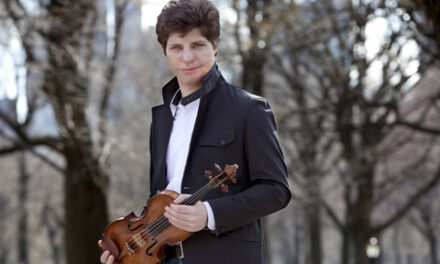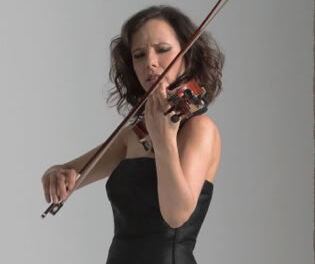Mainstream, straight-ahead jazz has always been a hard sell to the general public, and unless there is some cross-over appeal or you are one of the few whose name has entered the realm of celebrity, undiluted jazz performances do not attract the audiences that such extraordinary talents deserve. This was never more evident than on April 7, a beautiful spring Friday evening on Duke University’s west campus. While thousands of people were clamoring to get into Cameron Indoor Stadium for a performance by a flavor-of-the-month popular group, Page Auditorium was at best half-filled (as optimistic take instead of “half-empty…”) to hear an exhilarating jazz concert. The Duke University Jazz Ensemble opened up for the Terence Blanchard Quintet in the headline concert of the Second Annual Duke Jazz Festival.
This was an evening that showcased the incredible talents of Blanchard and the four other musicians who played with him and also demonstrated the mentorship and dedication that Blanchard has to jazz music education. He was in Durham for most of the week, teaching and sharing his playing, compositional, and life skills with Duke students and also experiencing the recent turn of events on the Duke campus.
Many of the greatest names in jazz history have emerged from sections of big bands, so it is logical that playing in such an ensemble is one of the best ways to get your chops together, learn how to read complex charts, and immerse yourself in the sound and culture of jazz. The Duke University Jazz Ensemble, under the leadership of John Brown, Jr., Director of the Jazz program, is a standard big band configuration. They played a diverse five-song set that demonstrated the tight ensemble, technical fluidity, and swing that separates the pros from the boys. Vocalist Gretchen Doores joined the band for a breathy, nervous sounding take on the James van Heusen standard “It Could Happen to You.” Guitarist Ben Shelton gave a nicely shaded performance of “Always and Forever,” a lovely ballad by Pat Metheny. Drummer Eric Bishop (for some reason hidden from view behind the risers) displayed a bright, energetic Latin beat in a rousing finale – “Muevea Los Huesos.”
As if being recognized as one of the great trumpet players of the past 25 years is not enough, Blanchard has an impressive list of film scores that he has composed and albums he has produced – and a strong commitment to jazz education. Cool as a spring shower, the five men in the quintet sauntered onto the stage and without comment launched into a high-energy original composition by Blanchard. The group – consisting of Brice Winston, tenor and soprano saxophones, Aaron Parks, piano, Derrick Hodges, bass, and Kendrick Scott, drums – was a firestorm of incredible power and precision. Blanchard moved freely around the stage with his trumpet, which had a small microphone attached directly to it. Without stopping to announce the second number, they moved right into a lovely sensuous ballad written by the pianist. This opening set lasted for about 30 minutes. Having never seen Blanchard perform before, I was thinking that he may be of the Miles Davis school of stage decorum. Davis was known for his virtual disdain for the audience – he would have his back turned for extended periods and rarely speak. As it turned out, I could not have been more off base. Blanchard is a delightful, funny, gracious host who had many heartfelt comments on recent events at Duke as well as extravagant albeit deserved comments for John Brown and all of the Duke students he worked with.
One of the great surprises – although it has become almost expected at big jazz concerts in this area — was the unscheduled appearance of Branford Marsalis. He and Terence grew up together in New Orleans – the birthplace of jazz. For those at the concert who might have known of Branford as the jovial bandleader for Jay Leno, his insanely fast and creative solos quickly dispelled any lingering notions that he was a pop or crossover sellout.
Much of the concert was taken up with new compositions that Blanchard admitted were being “tested” on the audience before they go into the studio to record them, so there was little that was recognizable as far as standard tunes. I don’t think anyone cared. This was a fascinating glimpse into the creative process and an opportunity to see and hear five virtuoso players. I was especially captivated by the harmonic voicings of the young pianist – he is going to become a dominant force in the jazz world.
As if everyone needed something to bring their blood pressure down and cool off a bit, the encore was an unidentified but harmonically rich, very slow ballad that transported you to a late-night jazz club.












